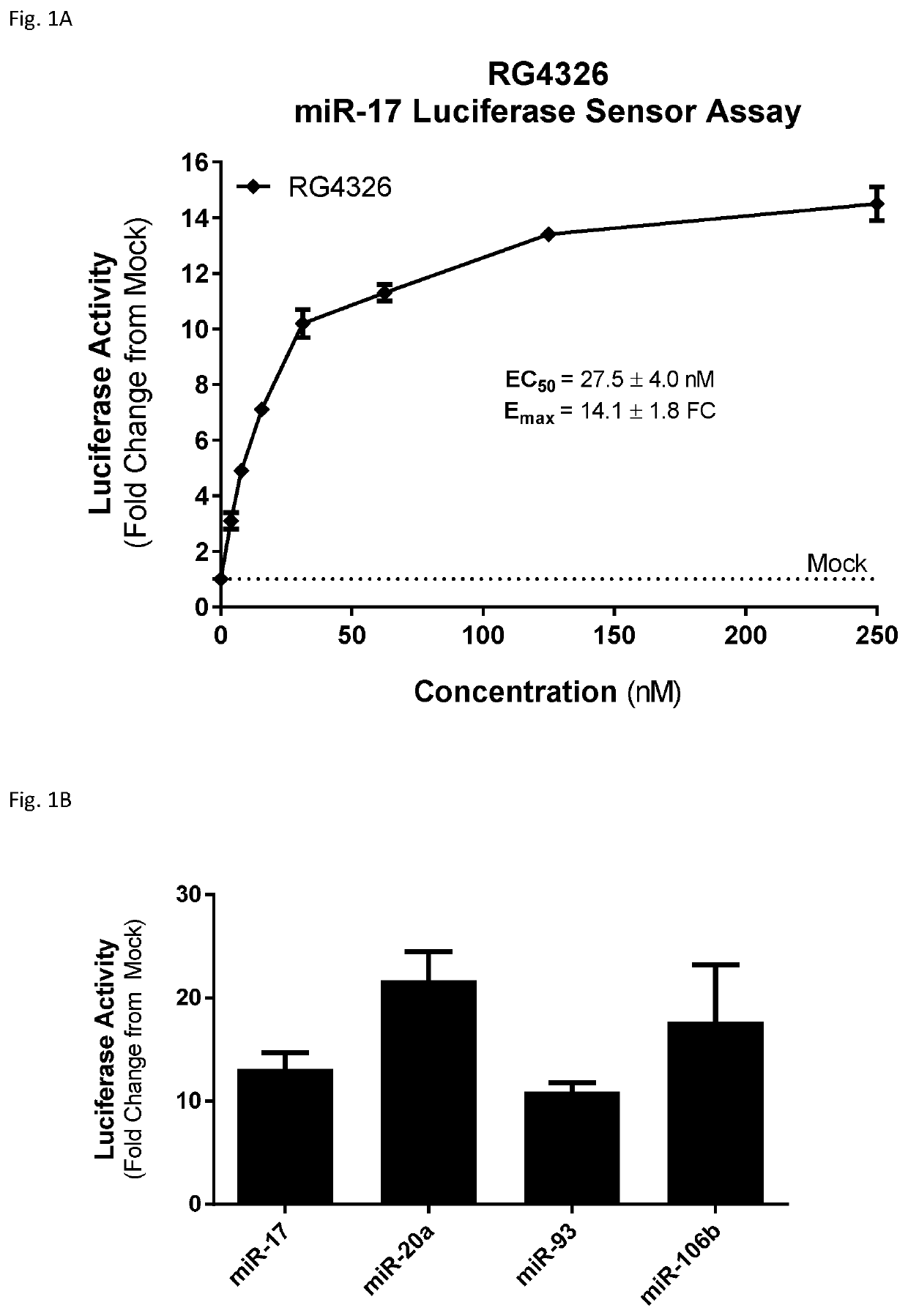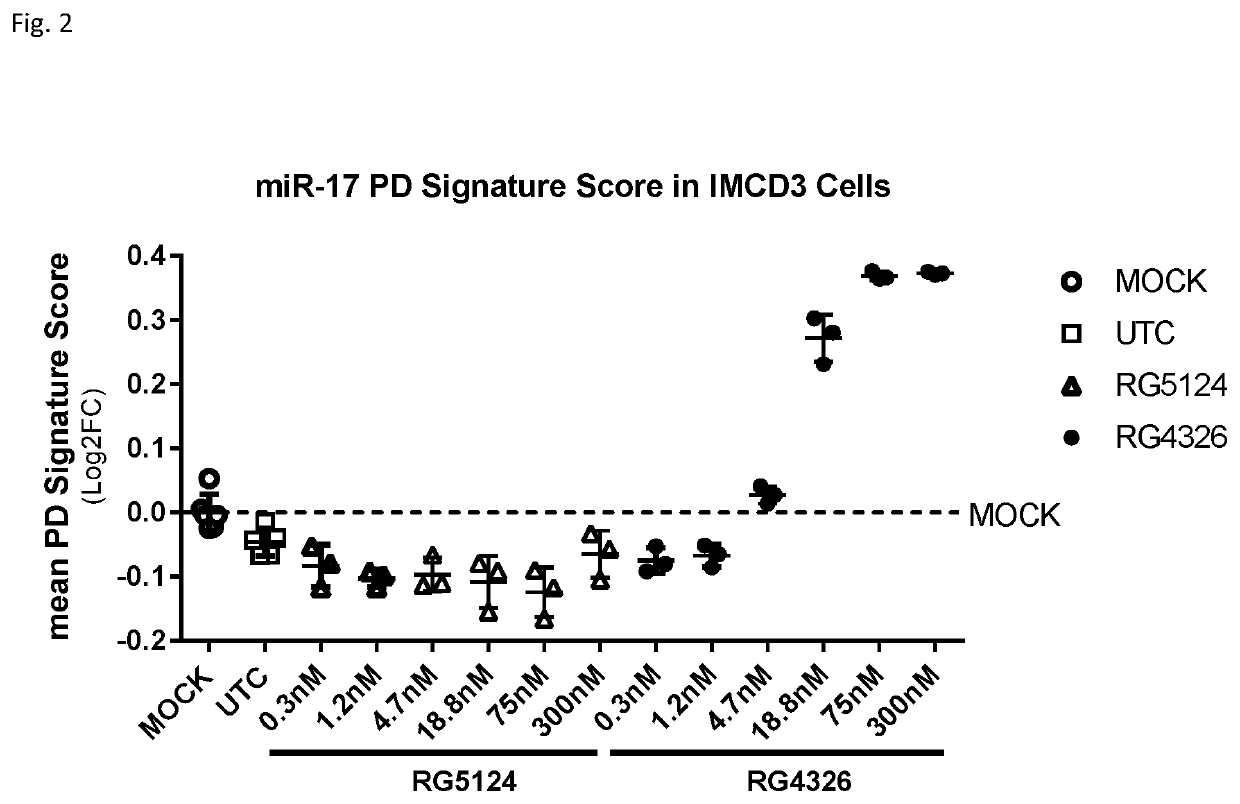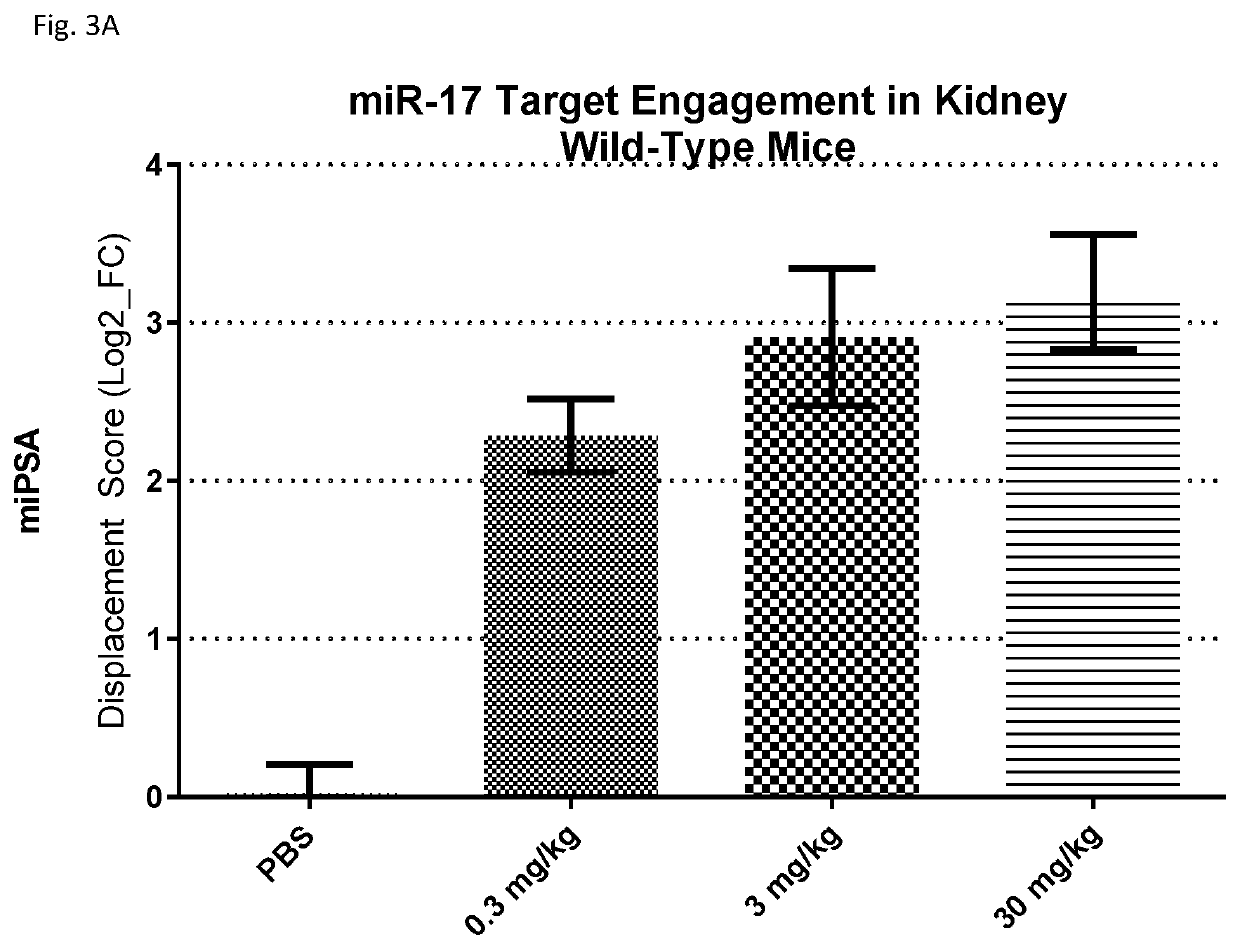Methods and compositions for treatment of polycystic kidney disease
a polycystic kidney and composition technology, applied in the field of compositions and methods for the treatment of polycystic kidney disease, can solve problems such as the declination of kidney function
- Summary
- Abstract
- Description
- Claims
- Application Information
AI Technical Summary
Benefits of technology
Problems solved by technology
Method used
Image
Examples
example 1
of miR-17 in PKD
[0481]miR-17 family members of the miR-17-92 cluster of microRNAs are upregulated in mouse models of PKD. Genetic deletion of the miR-17-92 cluster in a mouse model of PKD reduces kidney cyst growth, improves renal function, and prolongs survival (Patel et al., PNAS, 2013; 110(26): 10765-10770). The miR-17˜92 cluster contains 6 different microRNAs, each with a distinct sequence: miR-17, miR-18a, miR-19a, miR-19-b-1 and miR-92a-1.
[0482]The miR-17-92 cluster includes two microRNAs, miR-17 and miR-20a, that are members of the miR-17 family of microRNAs. Each member of this family shares seed sequence identity, and varying degrees of sequence identity outside the seed region. The other members of the miR-17 family are miR-20b, miR-93, miR-106a, and miR-106b. miR-20b and miR-106a reside within the miR-106a-363 cluster on the human X chromosome, and miR-93 and miR-106b reside within the miR-106b-25 cluster on human chromosome 7. The sequences of the miR-17 family members a...
example 2
Design and Screening
[0487]While the research tool compound showed efficacy in models of PKD, the compound was observed to be slightly proinflammatory in an in vivo study. Further, the research tool compound was not sufficiently efficacious for development as a pharmaceutical agent for the treatment of PKD. Accordingly, a screen was performed to identify inhibitors of one or more miR-17 family members that are sufficiently efficacious, convenient to administer, and safe for administration to subjects with PKD. An additional criterion was a sufficiently high kidney-to-liver delivery ratio, to enhance the proportion of anti-miR-17 compound that is delivered to the target organ.
[0488]Approximately 200 modified oligonucleotides comprising a nucleobase sequence complementary to the miR-17 seed sequence were designed, having varying lengths and chemical composition. The length of the compounds ranged from 9 to 20 linked nucleosides, and the compounds varied in the number, type, and placeme...
example 3
l Short Anti-miR-17 Compounds
[0502]An additional nine-nucleotide compound (RG4047), in which each nucleoside is an S-cEt nucleoside, was tested in selected assays, to compare the activity, safety and pharmacokinetic profile to RG4326.
[0503]One assay employed was the luciferase assay. As noted above, short (e.g. 9 nucleotide) anti-miR-17 compounds, while they may have an advantage in in vivo studies, do not necessarily perform well in in vitro transfection assays. Accordingly, the luciferase assay transfection conditions were optimized for short anti-miR-17 compounds, so that the inhibitory activity of the compounds could be measured.
[0504]RG5124 was used as a control compound. RG5124 is 9 linked nucleosides in length, and has the same pattern of sugar modification as RG4326, but has a nucleobase sequence that is not complementary to miR-17.
[0505]The luciferase reporter plasmid for miR-17 contained a fully complementary miR-17 binding site in the 3′-UTR of the luciferase gene. HeLa c...
PUM
| Property | Measurement | Unit |
|---|---|---|
| Molar density | aaaaa | aaaaa |
| Molar density | aaaaa | aaaaa |
| Molar density | aaaaa | aaaaa |
Abstract
Description
Claims
Application Information
 Login to View More
Login to View More - R&D
- Intellectual Property
- Life Sciences
- Materials
- Tech Scout
- Unparalleled Data Quality
- Higher Quality Content
- 60% Fewer Hallucinations
Browse by: Latest US Patents, China's latest patents, Technical Efficacy Thesaurus, Application Domain, Technology Topic, Popular Technical Reports.
© 2025 PatSnap. All rights reserved.Legal|Privacy policy|Modern Slavery Act Transparency Statement|Sitemap|About US| Contact US: help@patsnap.com



